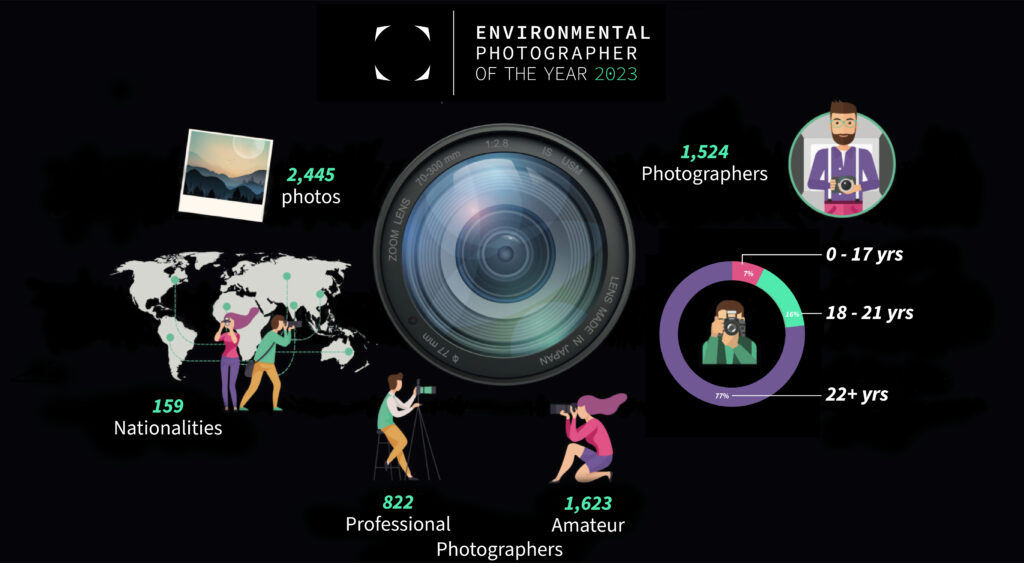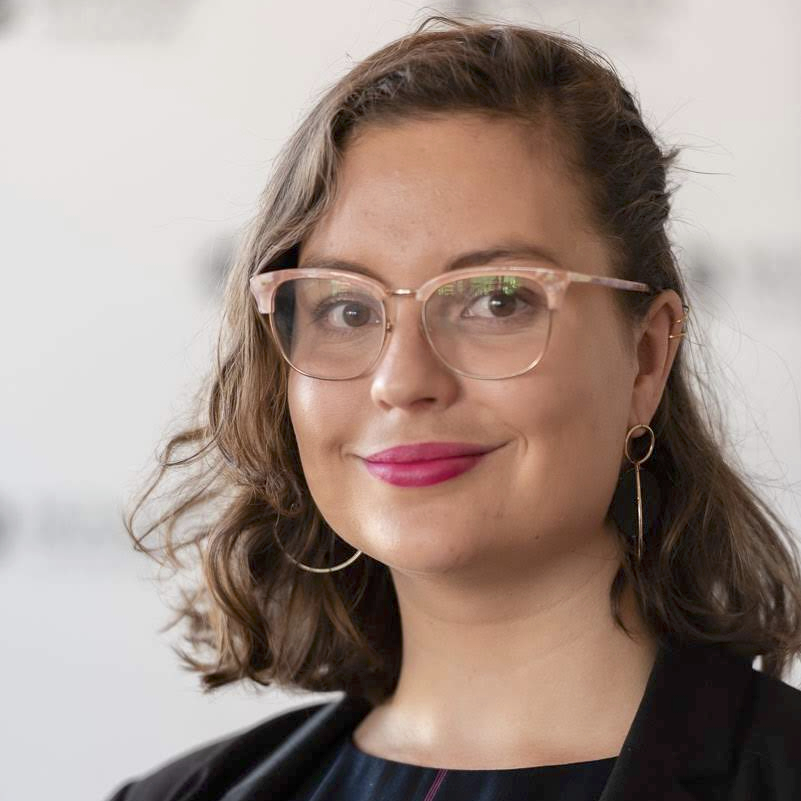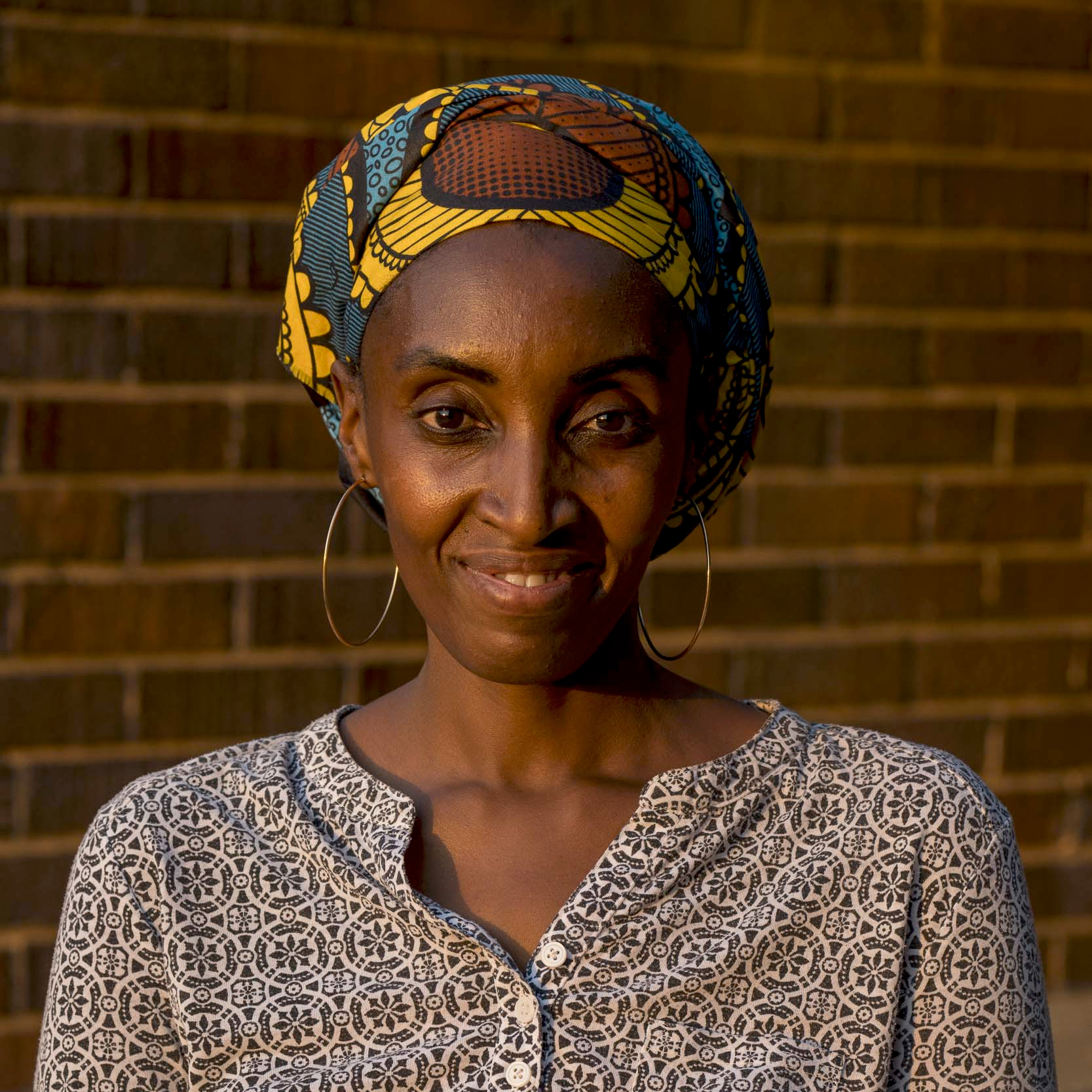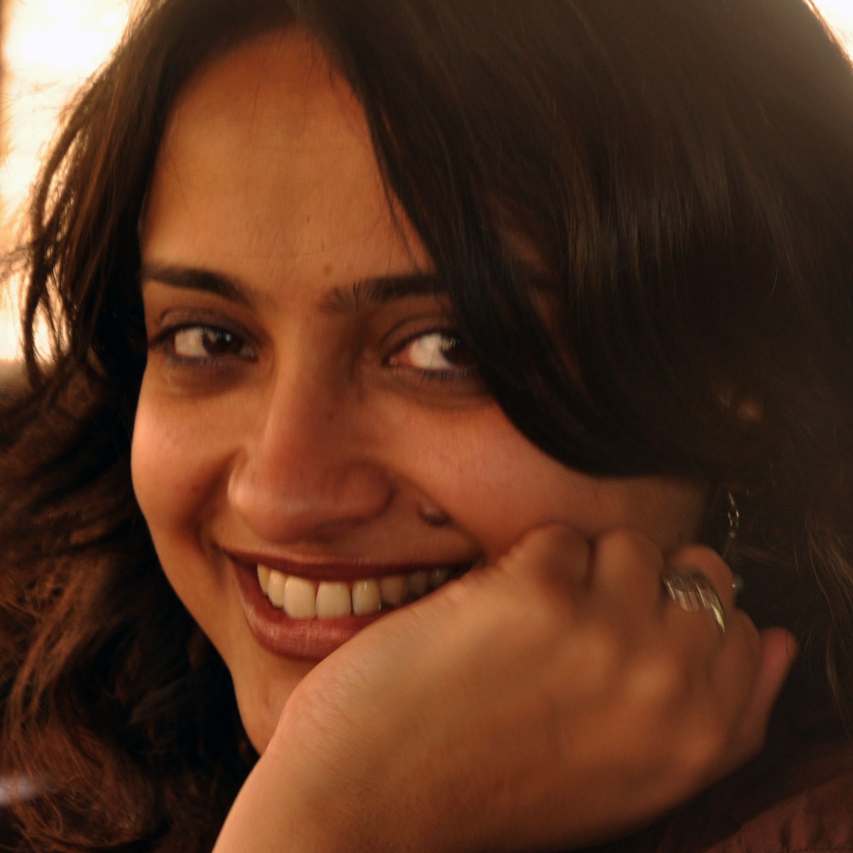
All photos were selected and approved in line with the 2023 competition’s rules and selection criteria.
“Everything photographers do is to mitigate the fact they are telling someone else’s story. There is no pure ethical photography practice: all we can do is strive is to be as ethical as possible”
– paraphrased from Sarah Waiswa (documentary photographer)

I am very happy to work with the Environmental Photographer of the Year as they continue working to develop robust strategies for considering ethics in the competition.

I'm very excited to be a part of this panel. Discussing how we capture, portray, and appreciate our environment is more important now than ever.

A photograph that tells a powerful story cannot be ignored and this competition aims to showcase some of that work. I hope the selection process will show not only the best talent, but some of the neglected yet important issues we, as people, need to take urgent action on.
The ethics panel will be involved in the selection process after the initial submissions screening and before the jury panel receives any photos to review, taking the following steps:
Through this process we hope to ensure that any photos selected for publication have a robust grounding in ethical photography practices, and represent their subject matter with dignity and respect.

“Images can be a powerful wake-up call to action, and that is what we all seem to need: that spur towards action. I am excited to see what our participants have documented and the opportunity their photography will offer to highlight some of the most pressing causes of our time.”


What a remarkable opportunity to witness our changing world through the lens of passionate photographers, where each image tells a unique story of our environment and its fragility.
The 2023 competition was open until 30 August. All entrants had to acknowledge acceptance of our Rules and Guidelines during the online registration process.
1.1. The competition is open to both amateur and professional photographers of all ages and from around the world.
1.2. Entries must be received by 23:59 British Summer Time (BST) on 30 August 2023.
1.3. Each entrant may submit up to three (3) still photographs.
1.4. All photographs submitted must have been taken on or after 01 Jan 2022.
1.5. Each photo must be submitted under one of the categories published on the competition website.
1.6. Each photo must be submitted with a completed form in English answering the below requirements accurately and in full:
1.6.1. Photographer information
1.6.2. Photo details, including but not limited to the date and time the photo was taken, a description of the photo (incl. a description of the observed scene and its background story), and an ethics statement.
1.7. All entries should be a faithful representation of the original scene and maintain integrity of the photo’s content and context. Some digital adjustments and editing is allowed (see the digital guidelines in section 7 of the competition rules), and you must endeavour not to deceive the viewer or misrepresent reality.
1.8. Entries with overlay signatures, watermarks or stencils will be disqualified automatically.
1.9. Entries must be submitted as digital files only, in a high-res JPEG format with a maximum file size of 199MB. If selected, entrants must be able to supply images as RAW files or original JPEGs.
1.10. CIWEM takes no responsibility for entries that are lost, delayed or incomplete or cannot be delivered or entered for any technical or other reason. Proof of delivery of the entry is not proof of receipt.
2.1. Entrants must apply ethical practices in the collection and presentation of photos. Photographers are responsible for ensuring the rights, safety, and wellbeing of all people and wildlife portrayed in their photos are respected. They must be able to describe steps taken to minimise any negative physical, emotional, or behavioural impacts.
2.2. Photos that raise ethical or consent concerns may be required to submit additional information or evidence for review by the Ethics Panel. The Panel’s decision is final and binding and no further correspondence will be entered into. More information about the Ethics Panel can be found on our website.
2.3. CIWEM will not accept photos of children and young people under the age of 18 while we research and develop a framework that will allow us to showcase photos of children in a responsible and accountable manner.
2.4. Entrants may not pay sources or subjects or reward them materially for information or participation.
2.5. Entrants must obtain all permissions needed prior to submitting their entry. This includes abiding by national and international law, and acquiring permits and permissions for accessing the area where the photograph was taken. Where there is a clear public interest that might justify a different approach, a rationale may be requested by the Ethics Panel. Entrants who are unable to provide sufficient evidence or a rationale for lack of evidence upon request will be disqualified. More information about the Ethics Panel can be found on our website.
2.6. Entrants must obtain full consent from any people featured in their photo. Entrants guarantee that all people have expressly and unequivocally consented to the capture of their likeness for the photograph, as well as for its reproduction, distribution, and public communication. Entrants unable to provide evidence upon request will be disqualified.
2.7. People and communities should be represented as accurately as possible while avoiding the perpetuation of stereotypes. All entries must be submitted in the spirit of raising public awareness, not exploitation of public sympathy.
2.8. While CIWEM will make reasonable efforts to ensure that all evidence is accurate and up to date, CIWEM makes no warranties or representations regarding the accuracy, correctness, reliability, or otherwise of such information, and assumes no liability or responsibility for any omissions or errors.
3.1. Judges appointed by CIWEM will select the competition winners and the shortlist of exhibition photos. More information about the Jury can be found on our website.
3.2. CIWEM reserves the right to cancel this competition at any stage.
3.3. CIWEM reserves the right to amend, remove or introduce additional judging categories, including prizes and conditions, at any stage during the competition.
3.4. Any entrant found to not comply with the competition rules at any stage of the competition will be disqualified and any prizes awarded will be forfeited.
3.5. The decision of CIWEM on all matters relating to the competition is final and binding.
4.1. Submissions from anyone born on or after 31 August 2001 are automatically entered into this category.
4.2. Photographers outside this age range are ineligible for this award.
4.3. Proof of date of birth may be required upon request.
4.4. For entrants under the age of 18, written permission from the parent or guardian is required upon entry.
5.1. Entrants must be the sole author and owner of the copyright for all the entries they submit, or they must have obtained permission from the copyright holder to submit the entries on their behalf. A copy of any such written permission must be supplied to the organiser on request.
5.2. Photos previously entered into other competitions are permitted, however entries that have won a top prize in a competition on or before the time of entry are not eligible.
5.3. The photographer retains the copyright to all their entries into the Environmental Photographer of the Year. The photographer will be credited. The entrant agrees that CIWEM will not be liable in the event of inadvertent omission of the credit.
5.4. Entrants agree to participate in related publicity and to the use of their name and entry for the purposes of advertising, promotion, exhibition, transmission and publicity of the competition and CIWEM without additional compensation.
5.5. Entrants grant CIWEM a non-exclusive sub-licensable licence to reproduce, publish, exhibit and communicate their entry to the public by exhibiting the entry through all media throughout the world for five (5) years in relation to the Environmental Photographer of the Year competition and CIWEM’s charitable activities. This includes but is not limited to: the competition judging process; an exhibition and tour (including virtual); inclusion in an Environmental Photographer of the Year Exhibition catalogue or book; online galleries; private viewings, websites and microsites, corporate communications, on partner’s network platforms and apps, reports, promotional, press, PR and marketing activities including digital and social media (paid and organic) and press and marketing materials, educational support and brand ambassadors, all of which are associated with the Environmental Photographer of the Year and CIWEM’s charitable activities and public benefit remit; and associated merchandising.
5.6. CIWEM is allowed to pass on any entry to online and print publications and to its partners to be used either for editorial or image-based promotion and exploitation only by CIWEM and its partners in relation to the Environmental Photographer of the Year, with full credit given to the photographer.
5.7. CIWEM’s use of the photographs may further include third party licensing (including further licensing opportunities to partners) to generate revenue, however, if CIWEM’s use is for ancillary purposes, it shall consult in good faith with the entrant about an appropriate share of revenue.
5.8. Entrants accept that their entry may be exhibited by CIWEM, or in other exhibitions organised or attended by CIWEM and by the partners as part of the Environmental Photographer of the Year competition. CIWEM reserves the right to reproduce any entry for exhibition purposes.
5.9. CIWEM cannot accept liability for the misuse of entries and or failure of any third party to comply with the Environmental Photographer of the Year’s credit guidelines.
5.10. Entrants are granting CIWEM permission to sub-license its rights to Partners of the Competition under the same terms and conditions contained herein.
5.11. CIWEM may grant to its partners of the Environmental Photographer of the Year competition (detailed on this website) the right (including but not limited to) to reproduce any entry from the exhibition in their own marketing, publications, use in exhibitions (including virtual), on websites, microsites, corporate communications, reports, promotions, digital media, social media (paid and organic), private viewings, online galleries, press and PR, brand ambassadors, marketing, education support and the partners promotion of their partnership of the Environmental Photographer of the Year.
6.1. Initial entry: all still photographs must be submitted as JPEGs, saved at a high-quality level with a maximum file size of 199MB. Each image file must be named with a brief title. If the photo titles is too long to be used as file names, a section of your title would be adequate.
6.2. Proof of authenticity: original digital camera RAW files will be required if your image is shortlisted. Digital images captured as JPEG are allowed, providing the original un-retouched JPEG is available for inspection. Any work created from more than one original (e.g. stitched images), must be declared as such in the submission form, and the original captured images should be available for inspection when requested.
6.3. Printing: for printing in all media and for inclusion in an exhibition, a high-resolution image (preferably TIFF) will be requested if your image is selected.
7.1. The following digital adjustments are allowed:
7.1.1. removal of sensor dust spots and chromatic aberration, and lens vignetting
7.1.2. levels, curves, colour, saturation, contrast work, shadow and highlights, neutral density gradients (in moderation)
7.1.3. cropping, sharpening, including selective sharpening, dodging, burning, and toning (in moderation)
7.1.4. panoramas, i.e. specifically and only those panoramas that are created from several photos taken at the same location and around the same time, which are then combined or stitched together using digital techniques, resulting in a wider view than can be achieved with most wide-angle lenses. NB: stitched panoramas must be declared in submission information.
7.1.5. focus stacking, so long as the resulting final image is a true representation of the original scene. The individual photos must be captured at the same time and in the same location. NB: focus stacking must be declared in submission information.
7.1.6. multiple exposures are only allowed if this is a feature of the camera and the result is one single file. Entrants must state in the submission form if their image is a multiple exposure. NB: multiple exposure must be declared in submission information.
7.2. The following digital adjustments are not allowed:
7.2.1. adding, moving or removing objects, animals or parts of animals, plants, people, distractions, etc.
7.2.2. adding or removing highlights, backscatter, bubbles, debris
7.2.3. painting the foreground / painting out the background.
7.2.4. composites and sandwich shots that add elements
7.2.5. pixelation
7.2.6. images that have been digitally manipulated outside of the allowed adjustments indicated in section 7.1.
8.1. The personal data of entrants will be managed by CIWEM in accordance with the General Data Protection Regulation (GDPR) 2018.
8.2. CIWEM will collect personal data about entrants (and when applicable, parents/guardians) at the time of entry, and as otherwise provided in order to administer the competition and its associated activities only. View CIWEM’s privacy policy at https://www.ciwem.org/privacy-policy.